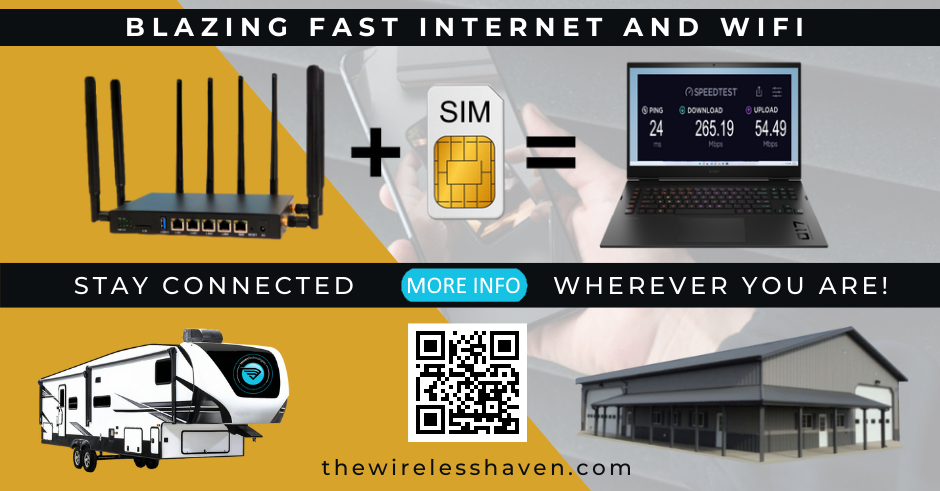I'm using some small omni antennas for testing before my directional antennas arrive. I've driven to different towers with the router being powered on an inverter to see which bands are being used and what kinds of speeds I'm able to get. The speeds were slower than I was expecting for being right next to the towers, so I'm trying to determine if this is a result of:
- A general limitation of the antennas.
- The modem not operating them in MIMO mode.
- The physical separation (width of the WE1326 case) not being far enough for MIMO.
- A speed limit of the tower.
- Some setting in the router/modem.
I am testing these over the wifi connection of the router with an android tablet. And taking into account non-optimal wifi on these devices, I'm using 802.11AC to connect to the 5.8 GHz wifi radio of the router. 802.11n on the 2.4GHz wifi radio becomes a bottleneck at these speeds. I've tested two 802.11AC devices talking to each other through the 5.8GHz radio on the router and I'm able to get anywhere from 120 to 200 Mbps. And that is with 2 devices competing with each other over the same frequency. If only one device was talking to a hardwired device or talking to a device over a different frequency, the speeds would be higher. So, in theory, my cellular speed tests over the 5.8 GHz wifi radio shouldn't be the bottleneck, but I will be trying a hardwired laptop at some point.
I also had some bottlenecks with using the google search web page speed test (search for "speed test" and it appears above the search results), so I switched to using the speedtest.net app. I've been able to get up to 130 Mbps from one of the towers using this app on a Pixel 1 cell phone (although that phone was on T-Mobile instead of AT&T, which is what I'm using for the router).
I also tested a block away with a clear line of sight, since being right under the tower isn't the optimal location. I suppose even a block away isn't optimal, since other tower interference can creep in easier and I'm not at the height of the transmitters, but the phone was able to do it and the phone has similar specs to the router modem (CAT-12 and 3x Carrier Aggregation).
In theory, even at 64 QAM, I should be able to get 300 Mbps out of 40 MHz of bandwidth with 2x2 MIMO. And the modem is capable of 256 QAM.
I suppose other possibilities are that the AT&T transmitters aren't doing MIMO on their end. SISO on 40 MHz of bandwidth would still be 150 Mbps.
Of course, this is a real world test, with some level of congestion on the towers too. However, with all towers exhibiting the same max speed, I'm thinking there is more to it than that. Let's say I should be able to get 50% of theoretical in a live test. That would mean 75 Mbps SISO and 150 Mbps MIMO with 40 MHz of bandwidth with 64 QAM. I'm rarely hitting above 60 Mbps.
It seems to me that I should be getting about double what I'm getting (which would be closer to what the phone was able to get), which leads me to believe that MIMO isn't being utilized.
Thoughts?


